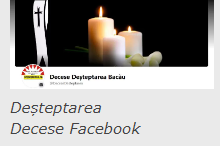The oldest documentary mention of the city of Targu Ocna dates from 1306 in a charter issued by Prince Alexandru cel Bun who granted the privilege of exploiting salt to two brother of Transylvanian origins. The city-resort of national interest Targu Ocna holds several records nationwide, which highlight the virtues of the city: faith, nature, health, culture, heroism.
Targu Ocna, named by Swedish traveler Erasmus Heinrich Scheider of Weismantel, who visited the region around 1713, as a “prosperous fair” dominating in economic and cultural terms the whole area, even the county seat of Bacau, for more than four centuries, was the first and only salt exploitation center in Moldova, a place where for centuries the “white gold” has been exported both to West European countries, and to Asia and Africa. The first mechanical well of Romania and the third in the world was made operational in Targu Ocna in 1864, as well as the first funicular in the country, designed in 1885 by engineer Anghel Saligny for transporting salt.
The locals boast several institutions among the oldest in Moldavia that are still working: the hospital opened in 1828; the buildings of the former barracks completed in 1836; public schools (1845); the city hall (1846); the prison (1856); the headquarters of the fire units (1850) and the beautiful train station, designed by engineer Anghel Saligny and open to the public on the rail stretch Adjud-Ciceu in 1884.
The city also owns the highest number of churches per number of inhabitants. There are 27 places of worship and nearly 11,000 inhabitants, with most churches being over a hundred years old. It is also Romania’s only city with a church located at three levels of altitude: 21 churches in the center of the city, one at 240 m depth in a salt mine and another five at 500-600 meters altitude, located on the Magura Mountain and the Titirezu Peak guarding the city.
The oldest church is dedicated to “Mother Paraskeva”, subsequently named the Princely Church, which was built in 1725 from logs on the right bank of the Valcica stream.
But the most towering and impressive is the church-fortress “Annunciation”, started in 1694 with funds provided by the great chancellor Ion Buhus and by a rich bourgeois named Paval, who owned more mills on the water of Slanic, according to the documents of those time, and completed in 1763 by great chancellor Radu Racovita, following two attempts to destroy it from the Tatars in 1717 and, respectively, the Turkish army in 1737. A votive painting created by painter Mihail Paninopol on the western wall of the narthex, above the door nearby the porch, pictures Radu Racovita holding the scale model of the church in his hand, alongside his family.
Located in a picturesque setting, on a terrace of sandstone towering over t he left bank of the Trotus river, with a fortified enclosure with thick walls and a height of nearly six meters, a former convent until the 20th century, the building impresses even today by its architecture and interiors, being, as the parish priest Vasile Pantaru claims, “a representative monument for the Moldavian late baroque.” Besides the carved wooden altar screen, commissioned by Ilinca Racovita around 1777, a work whose beauty has attracted the attention of researchers in the field of ecclesiastical art, there are also the pews, the canopy and some religious objects.
Preserving among the 53 rare books from the rich fund, of which the largest part was taken over at the end of the 19th century by the Library of the Academy, some Greek copies dating from 1754 to 1755 confirm the existence of a school in the monastery but also its tumultuous history in those times.
Over time, the monastery-fortress has faced testing times. In July 1821, a detachment of the Eterists led by Iordache Olimpiotul and Ion Farmache occupied the worship place, but an imminent strong Turkish attack made them to withdraw towards the Secu Monastery. Following their withdrawal, the Turkish troops ravaged the city and the church. In 1864 a little after the secularization of the monastic wealth, the building and its surrounding were to be turned into the barracks of the troops in charge of watching over prisoners. But the entreaties of influential people, including the politician and patriot Costache Negri, whose tomb is found inside the inner yard, removed the danger of this project. However, during the First World War, the monastic houses served as a warehouse for supplies and ammunition, miraculously escaping the enemy bombings.
Today the monastery is a place of pilgrimage for parishioners, as well as also for tourists, the same as the “Magura Ocnei” Monastery located on the mountain bearing the same name, on a summit over 600 meters high. The worship place was mentioned as a hermitage in 1665, it became in 1757 a branch monastery of the General Trusteeship of the Hospital Houses, which explains the appearance in the diptych of this hermitage of the name “Prince Constantin Racovita” as the first founder of this place of worship.
Another ecclesiastical attraction is the “Saint Varvara” Orthodox Church, impressive due to its original architecture and its positioning in a huge salt mine.
At the 9th level of exploitation in the sector named Pillar, located at 240 meters depth, the Orthodox place of worship, with a capacity of more than 500 people, was founded in salt by the miners, between April and October 1992. A wooden altar screen with 24 icons was located between two iconostases, to the right and left of the altar, also made up of salt, the same as the central chandelier.
The church was arranged at the entrance to the “health care unit” where various respiratory tract diseases are being treated; the unit is also visited by the tourists interested in playing sports such as volleyball, bowling, basketball, table tennis and even mini-football.
The first treatment and tourism unit was set up in the Pilot mine salt in 1974 130 meters in depth. Nearby this location, in the oldest mine, currently closed because the upper balcony was no longer safe for tourists, a record was registered, at least in Romania: the reverberations of the echo produced by human voice have multiplied over two minutes after the sound was made.
“A tenor from Cluj, impressed in a previous visit by the echo of the old mine, brought experts in sound measuring, and they noted an breathtaking reverberation both in intensity and duration,” says Aurel Bruma, former director of the exploitation salt mine.
In the same place, enthusiastic about what they saw through the enigmatic light of the neon installation, as well as about what they heard, the members of a group of ten German journalists declared unanimously in 1990 that the Targu Ocna Salt Mine is “the most impressive place” they have ever visited in Romania.
At the entrance to the same area, between 1980 and 1982 students from fine arts have created bas-reliefs in the salt wall, picturing both the miners’ activity, local folklore elements, as well as the heroism of the Romanian troops killed in the fierce battles held in the surrounding mountains during the First World War.
In 2005, given the growing number of visitors and people managing their health care, over 30,000 each year, the sanatorium was moved to a larger building, located in the Trotus Salt Mine, 240 meters depth and 136 meters away from the entrance into the mine. The current health and tourism unit covers an area of 13,000 square meters, a useful volume of 61,000 cubic meters and 8 meters height of the rooms with square pillars, furnished, benefiting by the complete lack of air currents and saline aerosols and a humidity less than 50 percent. The salty micro climate rich in negative ions has a constant temperature of 12-13 degrees Celsius, beneficial for treating respiratory pathologies.
The entertainment area in the salt mine includes sports fields, an auditorium named after Romanian actor Florin Piersic, a waterfall and a salty lake, space for aerobic gymnastics, facilities for playing pool, roller skating, mechanic games, playgrounds for children, areas equipped with swings, slides and cars. In addition, there are stores selling food products, souvenirs, terraces, internet wireless and computers.
Touring the church and the health and entertainment tourist area, “a true underground neighbourhood, can turn into a unique experience,” says Aurel Bucur, the director of Salrom, the company managing the activity of Targu Ocna Salt Mine.
Being a former employee of this mining unit, Aurel Bucur has supported special actions designed “to sustain the health tourism, and to avoid monotony at Targu Ocna Salt Mine.” One such initiative, “a world first”, says director Bucur, is the mountain bike competition, called “The Journey between Heaven and Earth in 2014”, whose route passes through the salt mine.
“Our research reveals we are the only ones on this planet who organize such a mountain bike competition that includes an underground route,” Aurel Bucur claims.
To diversify the leisure activities for the tourists and locals, a modern and well equipped swimming hall was opened, hosting the only outdoor swimming pool with salty water in Moldavia. The entertainment and commercial equipment turned the Targu Ocna city, the beneficiary over the past three years of a swimming and spa complex built by the city hall from European funds, into the summer center of swimming in the county.
This amazing outdoor swimming pool is located inside the Magura Park Spa Center in Targu Ocna; the visitors have the time of their lives splashing around in the pool, and enjoying a wide range of services, a relaxing cervical waterfall, Scottish showers, lockers, beach areas with umbrellas and deck chairs, a bar with disco music, stores selling beach items, food products and refreshments.
A second swimming pool especially designed for children can be found inside the spa center covering a total area of 1,019 square meters.
Over 1,000 swimming lovers, especially tourists, flood on a daily basis throughout the summer the swimming pools in the city of Targu Ocna.
The Targu Ocna City Hall, which launched projects aimed at diversifying the services of the resort, received the authorization to explore five springs with mineral waters captured in the Magura Park.
“As far as I know, we are the only city hall in Romania in this situation, for the other cases, the authorizations to explore springs were granted to commercial companies,” Targu Ocna Mayor Stefan Silochi told AGERPRES.
According to him, the spring water was analyzed by experts from the physical-chemical point of view, as well as by a medical commission that made recommendations for each spring, depending on the specific diseases.
“Having the spring analyzes and exploration license, we can develop as a spa resort of national interest, a status we obtained in December 2013,” said Stephen Silochi.
The Targu Ocna Local Council also has an eligible project on modernizing the natural park hosting eight mineral springs with chlorine, low bicarbonate, sulfur waters, but also to turn the lake formed after the collapse almost 40 years ago of the ceiling of an area of salt exploitation in solution using probes, into an entertainment area.
“Besides redefining the alleys, we want to plant trees and carry out landscaping works, reinforce the banks of the lake, and equip it with various small boats,” Silochi also said.
The local authorities also aim to boost the religious tourism, given the fact Targu Ocna is the city with the highest number of churches per number of inhabitants in Romania, some of them of historical importance.
The mountain tourism related to the Targu Ocna territory, “a Romanian Salzburg”, in the opinion of Vienna’s mayor who visited the area about five years ago, presents all necessary features for mountain hikes in the Magura, Nemira and Berzunti Mountains, where there is a network of marked paths leading to the Sandru Mare (1,639 meters), Nemira (1,648 meters), a complex nature reserve, Cebu (886 meters), Pufu (1,046 meters) and Lacos Peaks, and, to the Buciasi Waterfall, located only 2.5 km away from the city, 40 minutes of walking time, or to the valleys dug in the Trotus mountains by the tributaries of the Uz river, i.e. Dofteana, Slanic, Casin, Tazlaul Mare.
While walking on these mountain paths and roads, the traveler bumps into an impressive number of historical monuments, compared to the size of the city, which gives Targu Ocna a special place among the cities of Romania. Monuments, cemeteries of heroes, plaques are symbols of major historical events in the history of the Romanian people after 1800.
During the revolution of Tudor Vladimirescu, a detachment of 800 Eterists came to Targu Ocna under the leadership of Ioan Farmache, who ordered the occupation of the Raduceanu Monastery, very well located from the strategic point of view.
During the 1848 Revolution, Polish general Bem issued a proclamation in Targu Ocna towards Moldavia’s inhabitants, letting them know that all those who wanted to fight for freedom had to come to his headquarters in Targu Ocna.
The Targu Ocna residents made their contribution to the independency of Romania both via their representatives in the Targu Ocna 6th company of 2nd Battalion Bacau of 14th Regiment Dorobanti headed by their fellow citizen Captain Ioan Busila, and by their actions to support the front, transportation, donations in money or food products etc.
Mihail Sadoveanu who received literary recognition in 1904 after publishing four volumes — “Stories”, “The Falcons”, “Suppressed Pain” and “The Barrelhouse of old man Petcu”, lived in Targu Ocna in 1905 where he performed the first part of his military service.
“For three months, he had the opportunity to learn more about the life of the old fair, the infernal work in the mines, living in the barracks, as well as the picturesque life of this small town in early 20th century,” says Professor Corneliu Stoica, Targu Ocna historian.
The impressions from the brief but significant period Sadoveanu has spent as a soldier in this city will be literarily reflected in the book “Memories of goat keeper Gheorghita” released in 1906.
During the National Unification War between 1916 and 1918, doctor Mircea Bruteanu and Lieutenant George Enescu, alongside other 150 local heroes, among whom the legendary Constantin Musat, who fought with a single hand, stood out while taking part in the fierce battles.
Targu Ocna was bombed by the German troops, suffering major damage. Bloody battles took place around the city, on the Ciresoaia and Cosna heights, with Nicolae Iorga writing significant pages about the drama of those days.
In memory of those who sacrificed their lives for the country’s reunification, a monument was built on the Magura Mountain, nearby the monastery.
“At present, we are making investments and improve the quality of services to adapt to the demands of today’s tourism. It’s only natural for a city with an impressive and perhaps unique past in Romania by the variety of events, an amazing architecture and marvelous buildings of the last century that were fortunately not destroyed during the battles held here or by the communist bulldozers, that became in 2002 a resort of national interest,” says the mayor, also making reference to other projects underway in the city, for instance a pedestrian street connecting the city center with the entrance to the spa and entertainment complex.AGERPRES












